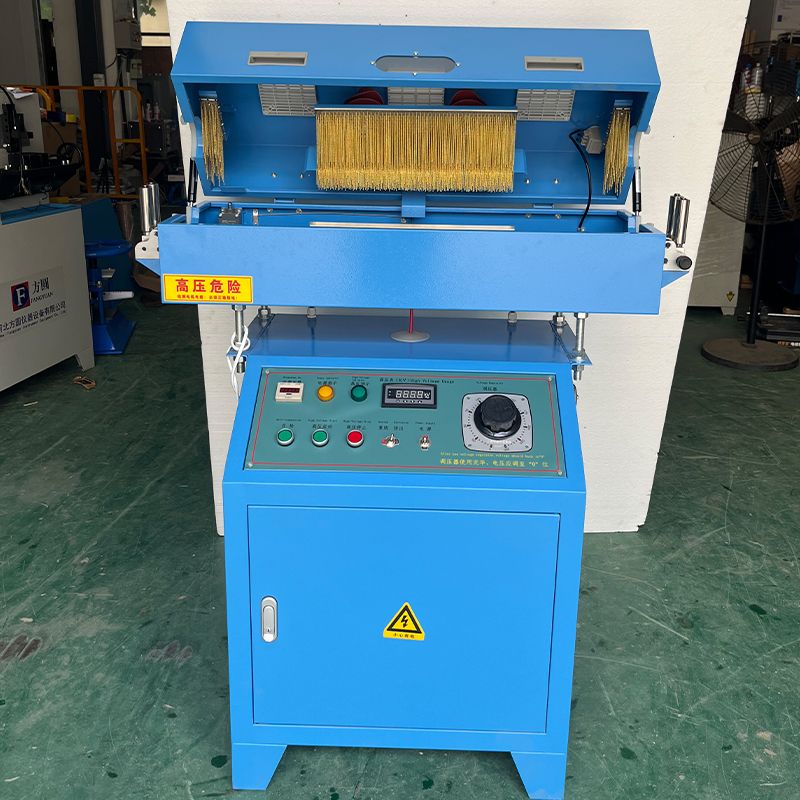optical coordinate measuring machine
Optical Coordinate Measuring Machines A New Era in Precision Measurement
In the world of manufacturing and engineering, precision is paramount. The ability to accurately measure the dimensions of components can significantly influence product quality and performance. One of the key advancements in measurement technology is the development of Optical Coordinate Measuring Machines (O-CMMs). These sophisticated devices leverage optical technologies to enhance the accuracy and efficiency of dimensional measurements, making them invaluable tools in various industries.
What is an Optical Coordinate Measuring Machine?
An Optical Coordinate Measuring Machine utilizes optical methods—such as lasers, cameras, and imaging systems—to capture the geometric characteristics of an object. Unlike traditional coordinate measuring machines (CMMs), which often rely on physical probes to touch the surface of objects, O-CMMs remotely assess dimensions and profiles without contact. This principle of non-contact measurement is particularly advantageous because it eliminates the risk of damaging delicate components, ensures faster measurement times, and allows for the inspection of fragile materials that might be compromised by physical contact.
The Technology Behind O-CMMs
Optical CMMs employ various technologies, including laser triangulation, digital imaging, and structured light. For instance, laser triangulation involves directing a laser beam at the target surface and measuring the angle of reflection to determine the distance to the surface. This enables the machine to construct a 3D representation of the object’s geometry. Additionally, digital cameras paired with sophisticated software can be used to analyze images of parts, providing accurate measurements of features such as holes, grooves, and contours.
Advantages of Optical Coordinate Measuring Machines
The benefits of Optical CMMs over traditional measuring methods are numerous
optical coordinate measuring machine

1. Speed and Efficiency O-CMMs can quickly scan large surfaces and collect vast amounts of data in a fraction of the time it would take traditional machines. This capability is crucial in high-volume production environments where efficiency is key.
2. Non-Destructive Testing By using non-contact measurement techniques, O-CMMs minimize the risk of damaging fragile parts while ensuring that the integrity of the tested object is maintained.
3. Versatility O-CMMs can measure a wide array of materials, including metals, plastics, ceramics, and composites. This versatility makes them suitable for diverse applications, from aerospace to automotive, electronics to medical device manufacturing.
4. Enhanced Accuracy With advancements in optical technology and sophisticated algorithms for data processing, Optical CMMs can achieve high levels of accuracy that often surpass traditional measurement methods.
Applications of Optical CMMs
The applications of Optical Coordinate Measuring Machines span across many industries. In the automotive sector, they are employed for inspecting complex geometries and ensuring that components meet stringent tolerance requirements. In the aerospace industry, O-CMMs play a pivotal role in verifying the precision of critical components that require near-perfect accuracy. Additionally, in the electronics industry, they are used to measure small and intricate parts where traditional methods might struggle.
Conclusion
As industries continue to evolve and demand higher precision and efficiency, Optical Coordinate Measuring Machines are poised to play an increasingly significant role in the quality control landscape. Their ability to deliver rapid, non-invasive measurements makes them an essential tool for manufacturers looking to enhance product quality and streamline production processes. As technology continues to advance, it’s likely that O-CMMs will become even more sophisticated, further pushing the boundaries of what is achievable in precision measurement. Embracing these innovations not only facilitates compliance with rigorous industry standards but also propels businesses toward a future defined by unmatched accuracy and excellence in manufacturing.
-
Why the Conductor Resistance Constant Temperature Measurement Machine Redefines Precision
NewsJun.20,2025
-
Reliable Testing Starts Here: Why the High Insulation Resistance Measuring Instrument Is a Must-Have
NewsJun.20,2025
-
Flexible Cable Flexing Test Equipment: The Precision Standard for Cable Durability and Performance Testing
NewsJun.20,2025
-
Digital Measurement Projector: Precision Visualization for Modern Manufacturing
NewsJun.20,2025
-
Computer Control Electronic Tensile Tester: Precision and Power for the Modern Metal Industry
NewsJun.20,2025
-
Cable Spark Tester: Your Ultimate Insulation Assurance for Wire and Cable Testing
NewsJun.20,2025
 Copyright © 2025 Hebei Fangyuan Instrument & Equipment Co.,Ltd. All Rights Reserved. Sitemap | Privacy Policy
Copyright © 2025 Hebei Fangyuan Instrument & Equipment Co.,Ltd. All Rights Reserved. Sitemap | Privacy Policy
